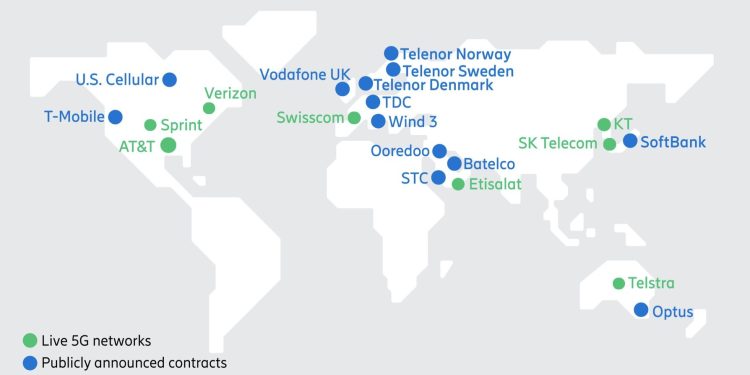Only a few companies are making the 5G cell tower hardware that will connect billions of devices to next-generation cellular networks, so when one of them issues a major software update, it can impact a huge number of people. That’s why Ericsson’s announcement today of “cutting-edge Standalone New Radio (NR) software” is actually a big deal. The company is updating its widely deployed tower hardware to support the international 5G NR standard’s newer Standalone mode, which enables 5G networks to be built without depending on older 4G infrastructure, radically increasing their performance.
As Ericsson explains, the Standalone NR software will enable carriers to upgrade existing tower hardware to support ultra-low latency, as well as improving 5G coverage and capacity. Ultra-low latency will enable 5G devices to go beyond just sending and receiving gigantic chunks of data at once, adding the ability to dynamically adjust as quickly as one millisecond (0.001 second), versus today’s markedly slower response times.
Ericsson also says that the software update will enable unspecified longer distances between towers and adds a critical new feature called inter-band carrier aggregation. This will enable a phone to simultaneously receive and transmit 5G signals on its low band, combined with either its midrange or high bands, somewhat akin to using two car radios tuned to 87.9 and 103.9 to pump out more complex audio than a single radio at either frequency.
Because the bands work differently, Ericsson expects inter-band carrier aggregation to particularly improve 5G speeds indoors, as well as in areas with poor coverage — the guaranteed low band signal you get everywhere could be augmented with a mid- or high-band 5G signal when it’s available. Network capacity can grow by 27%, or coverage can be expanded to 25% more people.
June 5th: The AI Audit in NYC
Join us next week in NYC to engage with top executive leaders, delving into strategies for auditing AI models to ensure fairness, optimal performance, and ethical compliance across diverse organizations. Secure your attendance for this exclusive invite-only event.
The company is also adding two new 16-transceiver Massive MIMO radios to its portfolio, AIR 1623 and AIR 1636, the former an inexpensive and easy option for building 5G sites and the latter designed to build 5G “with precision.” A new cloud solution called Ericsson Edge NFVI (Network Functions Virtualization Infrastructure) is also launching to optimize 5G performance at the edge of the network and is expected to enhance augmented reality and gaming applications demanding both low latency and high bandwidth.

